Mechanical and Thermal Properties of Apocynum and Ramie Fiber Mat Reinforced Polylactic Acid Composites
CAI Xinjuan(蔡新娟), MEI Xiaoxue(梅小雪), GHANI Muhammad Usman(关海成), YAO Lan(姚 澜)
College of Textiles, Donghua University, Shanghai 201620, China
Abstract: With the increasing awareness of environmental protection and rational utilization of resources, natural fiber reinforced composites have shown broad development prospects. Apocynum fiber, known as the “king of wild fiber”, not only has moisture absorption, air permeability, and good mechanical properties but also has many health-related advantages such as antibacterial properties. In this study, four types of needle-punched Apocynum fiber and ramie fiber mat reinforced polylactic acid (PLA) composites were fabricated. Mechanical and thermal properties of the composites were tested and analyzed. The results showed that compared with those of the ramie fiber finish needle-punched mat reinforced composites, the tensile strength and the tensile modulus of Apocynum fiber finish needle-punched mat reinforced composites had increased by 15.3% and 60.1%, respectively. In comparison, the bending strength and the bending modulus were decreased by 21.8% and 7.6%, respectively. Moreover, compared with the Apocynum fiber finish needled-punched mat reinforced composites and the ramie fiber finish needle-punched mat reinforced composites, the Apocynum 50/ramie 50 finish needle-punched mat reinforced composites had the best tensile and bending properties. The after-fracture morphology was detected by a scanning electron microscope (SEM). The thermal properties of the composites were also characterized. It was found that the thermal properties of the four types of composites showed very similar behaviors.
Key words: Apocynum fiber; ramie fiber; polylactic acid (PLA); composite; mechanical property; thermal property
Introduction
With the enhancement of environmental protection, natural fiber reinforced composites have gradually substituted glass fibers and carbon fibers. They are used as automobile materials, sound-absorbing materials, and sound-insulating materials[1-2]. There is an increasing number of researches on natural fiber reinforced composites in recent years, in which natural fibers are the reinforcement, and polymer resins are used as the matrix[3]. In the related research of natural fiber reinforced composites, jute, ramie, and flax fiber reinforced composites have been studied for a long time[4-5]. The needle-punched jute fiber and other natural fiber mats were also reported to reinforce composites[6]. Compared with the composites reinforced by glass fibers, they are lighter, easier to process, and lower in production costs. Liu and Huang[7]fabricated the flax fiber reinforced polypropylene (PP) composites by the wrapped method. The flax fiber reinforced PP composite was obtained by subsequent pressure molding process and had potential application in automobile, furniture, and other industries. Wangetal.[8]improved the mechanical properties of ramie fiber reinforced phenolic composites by alkali treatment. Zengetal.[9]investigated the interfacial properties between jute fibers and unsaturated resin and found that mechanical properties of the composite were close to those of the composite reinforced by glass fiber fabrics.
China is the country with the most extensive distribution area of Apocynum. The distribution area of Apocynum is about 0.41 million acres[10-11]. As an outstanding natural fiber, the Apocynum fiber has the excellent characteristics of ordinary natural fiber. It also has a silk-like luster. Additionally, the Apocynum fiber also has medical and health care value[12-13]. Therefore, the research of Apocynum fiber reinforced composites gradually increased. What is more, among other natural fibers, the ramie fiber, as a unique natural fiber in China, accounts for more than 90% of the total output of ramie fiber in the world. The length of ramie fibers is longer, 60-250 mm. The mechanical properties of ramie fibers are excellent. Therefore, ramie fibers are often used as the reinforcement of natural fiber reinforced composites.
In this study, Apocynum and ramie fiber reinforced polylactic acid (PLA) composites are prepared, and the properties of the composites are tested. The paper is organized as follows. The tensile properties of Apocynum fiber are firstly tested. Then four types of Apocynum and ramie fiber mats are prepared and the composites are fabricated by a pressure molding method. Finally, mechanical and thermal properties of the composites are tested and analyzed.
1 Experiments
1.1 Materials
The degummed Apocynum fibers were from Xinjiang, China, and the average fineness was (3.50±0.05) dtex. Ramie fibers were from China Shangde Textile Company, and the average fineness was (8.10±0.03)dtex. PLA (4032D type) pellets were purchased from Nature Works Company, USA.
1.2 Fiber tensile property test
An XQ-2 fiber strength and elongation meter was used to test the tensile properties of Apocynum fibers and ramie fibers. Based on the fiber fineness, the tensile strength and the initial modulus of fibers were analyzed. For each sample, 50 specimens were tested in the experiment, and the average value was obtained.
1.3 Composite fabrication
Four types of reinforcement mats were prepared, and they were Apocynum pre-needle punched fiber mats, Apocynum finish needle-punched fiber mats, ramie finish needle-punched fiber mats, Apocynum 50/ramie 50 finish needle-punched fiber mats, respectively. The fiber mats were processed with opening, mixing, and carding, and then were bonded by pre-needling or finish needling. The pre-needling process parameters were as follows. The needle-punched frequency was 250 r/min, the needle-punched stroke was 70 mm, and the needle density was 500 needle/m. The finish needle-punched parameters were as follows. The needle-punched frequency was 580 r/min, the needle-punched stroke was 60 mm, and the needle density was 8 000 needle/m. The basic parameters of different fiber mat samples prepared in the experiment are shown in Table 1.
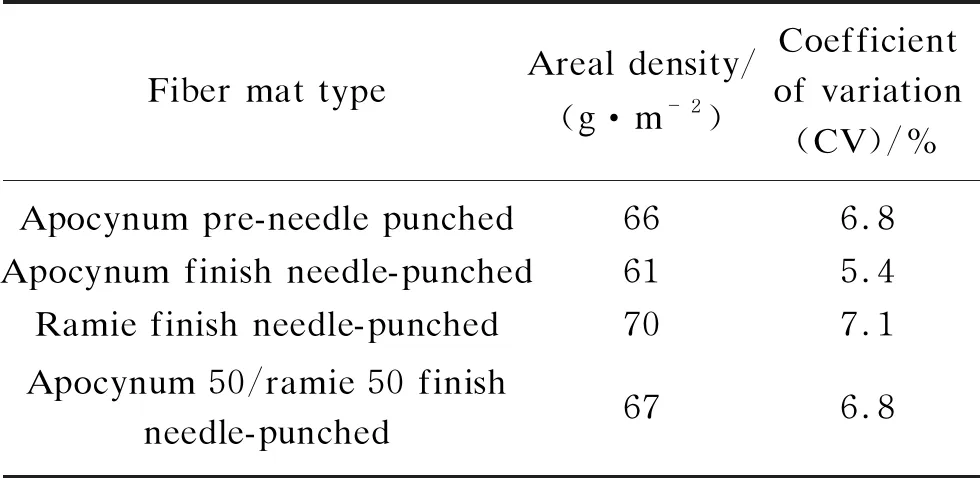
Table 1 Basic parameters for the fiber mat
Four-layer fiber mats and five-layer PLA films were used to make composites. The temperature for compression molding was set as 180 ℃. The pressure was 3 MPa and the pressing time was 5 min. Four types of fiber mat/PLA composites are shown in Fig. 1. It can be seen that the surfaces of composites are smooth and there is no obvious surface defect like bubbles and small holes. The average thickness of each type of composites is about 1.2 mm. For the convenience of discussion, from this section to the end (unless otherwise specified), the Apocynum fiber pre-needle punched fiber mat/PLA composite is referred to as A (pre), the Apocynum fiber finish needle-punched fiber mat/PLA composite is referred to as A(finish), the ramie fiber finish needle-punched fiber mat/PLA composite is referred to as R(finish), and the Apocynum 50/ramie 50 finish needle-punched fiber mat/PLA composite is referred to as A50/R50(finish).

Fig. 1 Four types of fiber mat/PLA composites: (a) A (pre); (b) A (finish); (c) R (finish); (d) A50/R50 (finish)
1.4 Composite tensile property test
The tensile test was carried out according to the ASTM D3039 standard, and five specimens were tested for each sample.
1.5 Composite bending property test
The bending test sample was prepared according to the bending test method ASTM D790, and five specimens were tested for each sample.
1.6 Scanning electron microscope (SEM) observation
The Hitachi TM-3000 SEM (Japan) was used to observe the cross-section morphology of composites after tensile and bending tests.
1.7 Composite thermal property test
Thermal properties of composites were tested by PYRIS 6 differential scanning calorimetry (DSC). For each test, composites with a mass of about 7 mg were placed in the sample pan. Continuous heating was used to observe the quality changes of different composites during the heating process. The test atmosphere was nitrogen, the test temperature range was 40-600 ℃, and the heating rate was 10 ℃/min.
2 Results and Discussion
2.1 Tensile properties of Apocynum fibers and ramie fibers
The tensile stress-strain curves of Apocynum fibers and ramie fibers were obtained from 50 sets of typical tensile fracture data, as shown in Fig. 2. The detail data were shown in Table 2 after calculation. We can find that the average tensile strength of Apocynum fibers was 8.33 cN/dtex, higher than that of ramie fibers. The initial modulus of Apocynum fibers was 265 cN/dtex, higher than that of ramie fibers. The elongation at the break of Apocynum fibers was 3.74%, lower than that of ramie fibers due to the higher internal orientation and lignin content of Apocynum fibers.
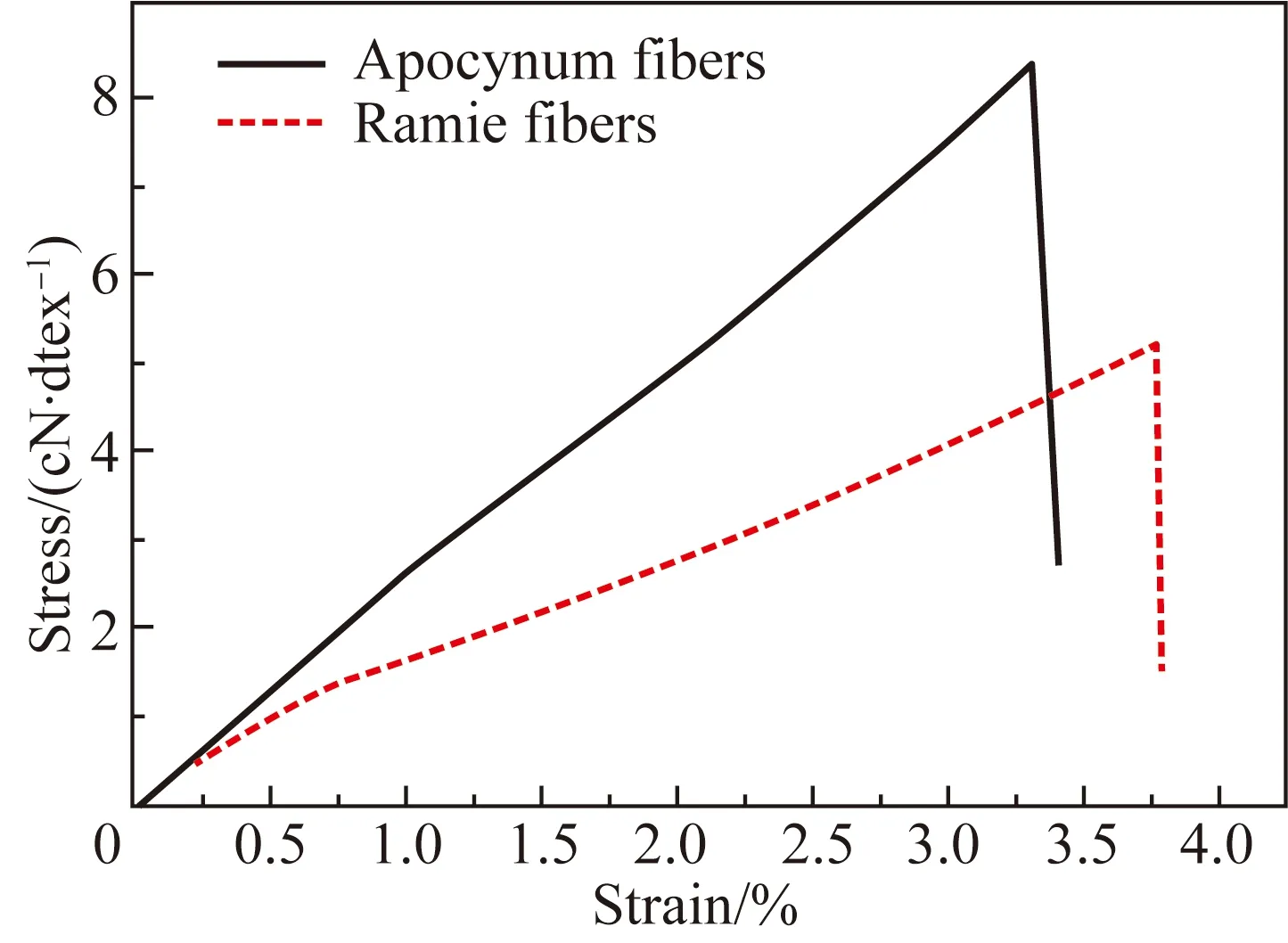
Fig. 2 Typical stress-strain curves of Apocynum fibers and ramie fibers

Table 2 Comparison of mechanical properties of Apocynum fibers and ramie fibers
2.2 Tensile properties of composites
The tensile stress-strain curves of four types of composites are shown in Fig. 3. The results show that the tensile stress-strain curves of four kinds of composites conform to tensile characteristics of natural fiber-reinforced composites because Apocynum fibers and ramie fibers belong to elastic-plastic materials. The obtained composites still show the mechanical characteristics of elastic-plastic materials when the composites are stretched. At the same time, most of the fibers in the fiber mat were bending, and the cohesion between fibers was loose. When the tensile load was applied to fibers, the fibers gradually changed from the curved state to the straight state. The cohesion between the fibers gradually became tight under the tensile load, which made the second half of the tensile curve exhibit nonlinear deformation before fracture.

Fig. 3 Tensile stress-strain curves of composites:(a) A (pre); (b) A(finish); (c) R(finish);(d) A50/R50 (finish)
Since the fiber volume content of composites was 10%-16%, and it affected tensile and bending properties of composites, the fiber volume content of composites was normalized by
(1)
wherePis the normalized strength or modulus of composites,Ris the measured strength or modulus of composites, andCis the fiber volume content.
The normalized values of tensile strength and tensile modulus of composites were compared, as shown in Fig. 4. After finish needling of the fiber mat, the tensile strength and the tensile modulus of the composite increased by 11.6% and 14.7%, respectively. Because the finish needling process improved the cohesion between fibers, the force transfer between fibers was more effective in the tensile process of composites. Additionally, it can also be found that the tensile strength and the tensile modulus of A (finish) were 15.3% and 60.1% higher than those of R(finish), respectively. The main reasons were as follows. Firstly, the tensile strength and the tensile modulus of Apocynum fibers were higher than those of ramie fibers. Secondly, the fineness of Apocynum fibers was about half of that of ramie fibers, which made the contacting area with resin larger, and the interfacial effect of the composite was weakened.

Fig. 4 Comparison of normalized values of composites:(a) normalized tensile strength; (b) normalized tensile modulus
2.3 Bending properties of composites
The bending stress-strain curves of the composites are shown in Fig. 5. We can find that the whole curve before the fracture shows linear deformation. Because the elongation deformation of the fiber was relatively small after loading, the nonlinear behavior was not apparent. Furthermore, according to Fig. 6, the normalized bending strength and the normalized bending modulus of A (pre) were 23.4% and 16.3% higher than those of A(finish), respectively, which was mainly due to more needle punching steps, which led to a tighter fiber structure in the mat and resulted in relatively weak fiber-resin bonding. By comparing the normalized composites, it was found that the bending strength and the bending modulus of A (finish) were lower than those of R(finish) and A50/R50 (finish). The normalized bending strength and the normalized bending modulus of A (finish) were 21.8% and 7.6% lower than those of R(finish), respectively, because Apocynum fibers were relatively smooth and had lower bonding with the matrix.
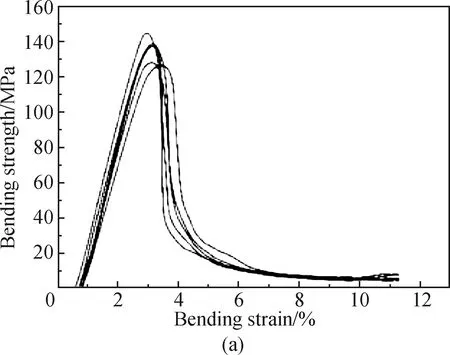
Fig. 5 Bending stress-strain curves of composites:(a) A (pre); (b) A (finish); (c) R(finish);(d) A50/R50(finish)

Fig. 6 Comparison of normalized values of composites:(a) normalized bending strength; (b) normalized bending modulus
Additionally, the fineness of Apocynum fibers was lower than that of ramie fibers. The combination between Apocynum fibers was closer after the finish needling, which resulted in the low wettability of resin in the pressure molding process. More defects and voids existed in the interface layer of Apocynum fibers compared with ramie fibers. Besides, there were more grooves on the surface of the ramie fibers, which improved the bonding between the fiber and the resin.
2.4 Fracture morphology of composites
The fracture morphology of composites before and after tensile and bending tests is shown in Fig. 7. Herein, the representative pictures selected as fracture morphology of composites were very similar. In Figs. 7 (a) and (b), after tensile test, the composite broke in the middle for each sample, and the edge after fracture was relatively clear with few fibers being pulled out. It could be clearly seen from Figs. 7 (c) and (d) that the upper surface was subjected to the compression loading, the bottom surface was subjected to the tensile loading, and the samples exhibited the curved shape. Also, the fracture occurred in the middle of the sample with fiber breakage.
Figure 8 is the SEM images of the tensile fracture sections of different composites with magnifications of 1 000 times and 3 000 times, respectively. There are obvious fiber pull-out phenomena in the tensile section of composites. The reason for this is that the interfacial tension between the fiber and the resin was large. The resin cannot well infiltrate into the fiber, resulting in poor interfacial adhesion between the fiber and the resin. We could find that the drawn length at the brittle fiber fracture in Fig. 8 (c) was slightly shorter than that in Fig. 8 (a). When the composite was reinforced by finish needle-punched fiber mats, the degree of fiber entanglement was enhanced, and the force transmission between the fibers was more effective. It could be also seen from Figs. 8 (d) and (f) that the interfacial gap between the Apocynum fiber and the resin was larger than that between the ramie fiber and the resin. However, the tensile section of Apocynum fibers was flatter than those of ramie fibers. Because the tensile mechanical properties of Apocynum fibers were higher than those of ramie fibers, during the stretching process, the fiber acted as the reinforcement of the composites and determined the tensile properties of composites.
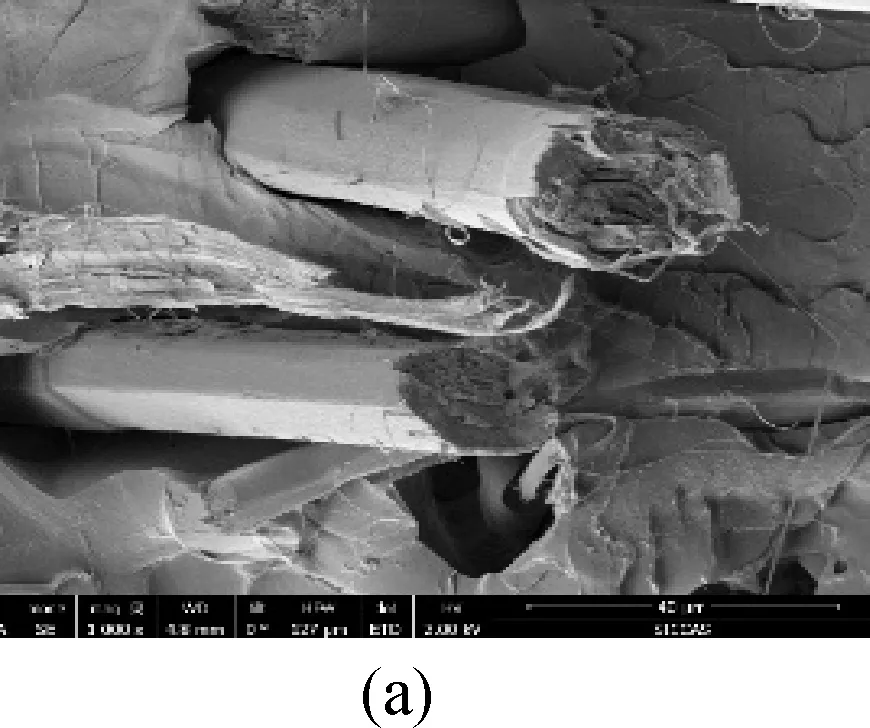
Fig. 8 SEM images of cross-section area after tensile test:(a)-(b) A (pre); (c)-(d) A(finish);(e)-(f) R(finish); (g)-(h) A50/R50(finish)
Figure 9 is the SEM images of the bending fracture cross-sections of composites with magnifications of 1 000 times and 3 000 times, respectively. There were many fibers exposed outside the fracture surface. Different from the tensile section, the bending section was relatively neat. Firstly, it is observed that the surface of A (finish) in Fig. 9 (d) has more damage caused by the needle acting on the fiber surface during the finish needling process. These damages resulted in a decrease in the fiber mechanical properties and the composite bending properties. Secondly, the bottom layer of fibers during the bending test was mainly subjected to the tensile force. During the finish needle punching, the number of bent fibers decreases as the needle sinks in the direction parallel to the fiber plane. So the number of fibers that bear the tensile force in the bottom layer decreases. Finally, it can be seen that the gap between the ramie fiber and the resin in Fig. 9 (d) is small, the fracture surface of the resin matrix is stepped, and part of the resin adheres to the ramie fiber. The above shows that the bending force is effectively transmitted to the ramie fiber during the bending test. In the same way, the gap between the fiber and the resin in A50/R50 (finish) shown in Fig. 9 (h) is smaller than that of other composites, which also explains why the bending properties of A50/R50 (finish) are higher than those of other composites from a microscopic perspective.
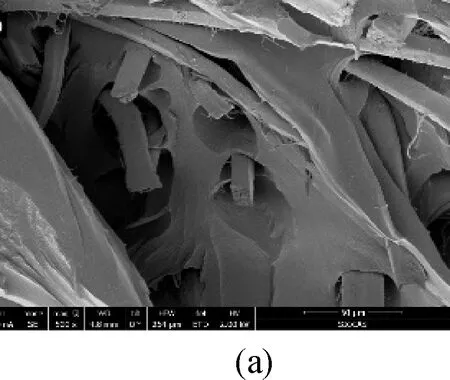
Fig. 9 SEM images of cross-section area after bending test:(a)-(b) A (pre); (c)-(d) A(finish);(e)-(f) R(finish); (g)-(h) A50/R50(finish)
2.5 Thermal properties of composites
The thermogravimetric analysis (TG) curves of composites are compared in Fig. 10. We can see that the mass change of composites under continuous heating can be divided into three stages. The first stage mainly occurred in the temperature range of 90-110 ℃. In this stage, the combined water and a small amount of cellulose in the fiber reinforcement were decomposed after heating, resulting in a slight decrease in the quality of the composite. The second stage mainly occurred in the temperature range of 230-360 ℃. During the continuous heating process, cellulose and lignin in the fiber reinforcement and PLA were pyrolyzed, which was the fastest reaction part, and most of the mass of the composite was lost. The third stage occurred from 360 ℃ to the end. It was a main pyrolysis process of a small amount of residual lignin and PLA.

Fig. 10 TG curves of composites
In addition, the pyrolysis temperatures of different composites are shown in Table 3, and it can be seen that the difference between the initial temperature and the maximum pyrolysis rate temperature of four composites was not obvious, and the thermal stability of four composites was relatively similar overall. Among them, the thermal stability of A (finish) was slightly higher than that of A (pre), because the friction between fibers was enhanced during the finish needle-punched reinforcement process. Thus the improvement of the friction increased the degree of cohesion between fibers and also increased the overall thermal cracking resistance of the composite. Also, the thermal stability of A (finish) and A50/R50(finish) was slightly higher than that of R(finish). The reason might be that the cellulose content of Apocynum fibers was slightly higher than that of ramie fibers.

Table 3 Pyrolysis temperature of composites
3 Conclusions
In this paper, the Apocynum fiber reinforced PLA composites were prepared by pressure molding process, and mechanical and thermal properties of composites were studied. Through a series of comparisons with ramie fiber reinforced composites, the following conclusions were obtained.
The average tensile strength of Apocynum fibers was 8.3 cN/dtex, and the elongation at break was 3.5%. The mechanical properties of the A (pre) and A (finish) showed that the tensile strength and the tensile modulus were 11.6% and 14.7% higher than those of A (pre), respectively. However, the bending strength and the bending modulus of A (finish) decreased by 23.4% and 16.3%, respectively, compared with those of A (pre), which was mainly due to the fact that more needle punching steps would lead to a tighter fiber structure in the mat and result in relatively weak subsequent fiber resin bonding. Moreover, A50/R50 (finish) had the highest tensile and bending properties. It was found out that the debonding of Apocynum fibers was more severe than that of ramie fibers by SEM, which might be due to weaker interfacial bonding for Apocynum fibers, as it had a smoother fiber surface compared to ramie fibers. Four types of thermal properties were characterized and it was shown that they had very similar behaviors.
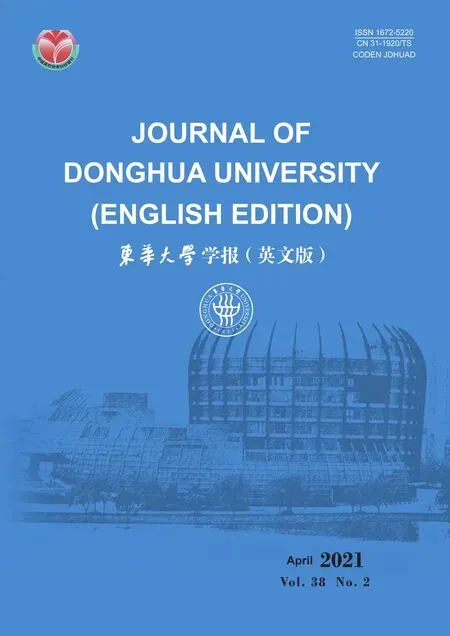 Journal of Donghua University(English Edition)2021年2期
Journal of Donghua University(English Edition)2021年2期
- Journal of Donghua University(English Edition)的其它文章
- Electrochemical Performance of Core-Sheath Dip-Coated Lignin Derived Carbon/Wet-Spun Graphene Electrodes for Fiber-Shaped Supercapacitors
- Preparation and Properties of Polyurethane/Nickel Nanofiber with Core-Shell Structure Using Coaxial Electrospinning Method
- Trajectory Optimization and Motion Simulation of a Flexible Polishing Industrial Robot for Watchcases
- Effect of Supported Bearing Clearance on Load-Sharing Characteristics of a Double-Row Planetary Gear System
- Meta-Analysis on the associations between Prenatal Perfluoroalkyl Substances Exposure and Adverse Birth Outcomes
- Numerical Simulation of Space Fractional Order Schnakenberg Model
